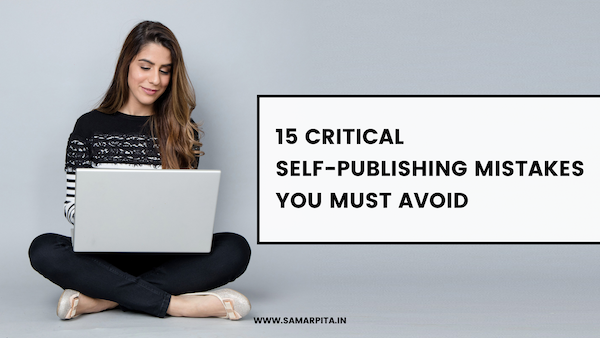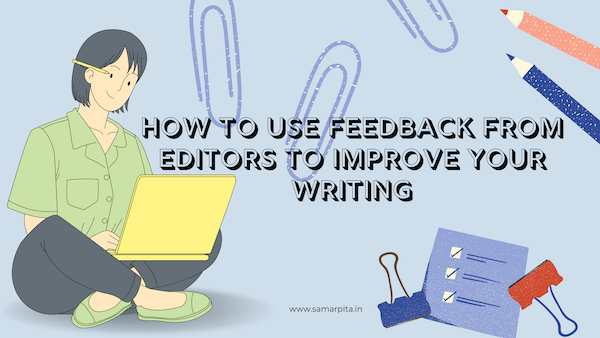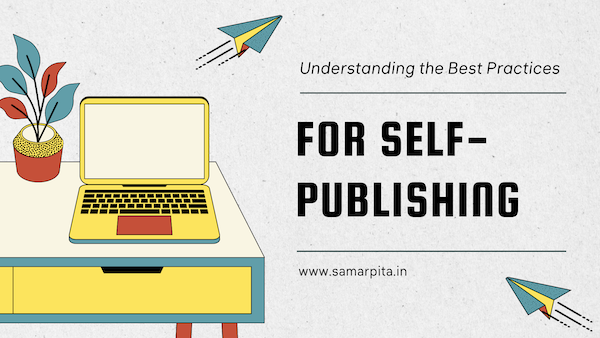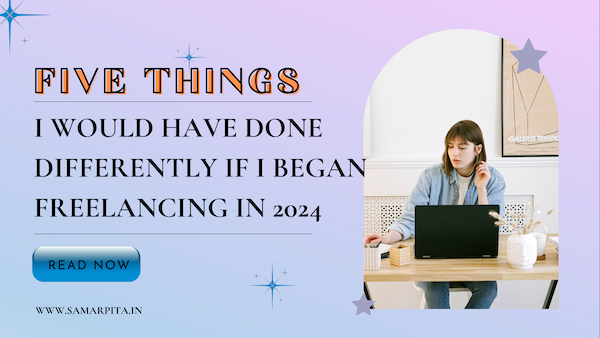First of all, do you know what self-publishing is? Is it the same as vanity publishing or is it something different? Self-publishing is the process of publishing a book, magazine, or any other written material without the involvement of a traditional publishing house. The author takes full responsibility for the entire process, including editing, design, marketing, and distribution. Self-publishing is becoming increasingly popular with the rise of digital technology and the availability of online platforms that make it easier for authors to reach a wider audience.
Self-publishing has revolutionized the literary landscape, providing authors with unprecedented control over their work. However, navigating the self-publishing journey requires a strategic approach to ensure success. In this blog post, we’ll explore best practices for self-publishing, covering essential aspects from identifying the ideal candidates to the importance of book cover design and the necessity of a reliable book distributor.
Who Is Self-Publishing Ideal For?
Self-publishing appeals to a diverse range of authors, making it an ideal choice for those who value autonomy and want a more direct connection with their readership. It is particularly suitable for:
- Entrepreneurial Authors: Writers with a keen entrepreneurial spirit often thrive in the self-publishing arena. The ability to control every aspect of the publishing process, from editing to marketing, aligns well with an entrepreneurial mindset.
- Niche Authors: If your work caters to a specific niche or target audience, self-publishing allows you to reach your readers directly without navigating the traditional publishing gatekeepers.
- Authors with Established Platforms: If you have an existing platform, such as a blog, social media presence, or a dedicated following, self-publishing leverages these connections, enabling you to capitalize on your established audience.
Get Your Manuscript Edited
It is highly important for self-published authors to get their manuscripts professionally edited. Editing is a crucial step in the publishing process that helps to ensure the quality and readability of a book. A professional editor can help identify and correct errors in grammar, spelling, and punctuation, as well as offer suggestions to improve the overall structure and flow of the story.
Additionally, a good editor can provide valuable insights and feedback on the content of the book, helping the author to refine their work and make it more compelling to readers. In self-publishing, the author takes on all responsibilities, including the quality of the final product. Therefore, investing in professional editing is a wise choice for self-published authors who want their work to be taken seriously and reach a wide audience.
Rely On Feedbacks From Critique Circles/Editors
Critique circles and editors can provide a fresh perspective on the author’s work and help identify areas for improvement. Feedback can help the author refine their writing and ensure that the book is well-received by readers.
Moreover, relying on feedback can also help authors identify any plot holes, character inconsistencies, or other issues that can detract from the overall quality of the book. By receiving feedback from multiple sources, authors can gain a more comprehensive understanding of their work and make informed decisions about how to improve it.
Overall, incorporating feedback from critique circles and editors is essential for self-published authors who want to produce high-quality work that is well-received by readers. It can help improve the writing, strengthen the story, and increase the chances of success for the book.
Also Read: Hashtags And How To Use Them On Social Media
Market Your Book From The Beginning
Marketing is an important aspect of the publishing process and can help generate buzz and interest in the book before its release. This can help to build a readership and increase the visibility of the book, making it more likely to be successful once it is published.
There are various marketing strategies that self-published authors can use, including social media, email marketing, book signings, and book fairs. It is also important for authors to establish an online presence, through a website or blog, where they can connect with readers and share updates about their work.
Additionally, self-published authors may also want to consider hiring a publicist or marketing consultant to help them promote their book. These professionals have experience and expertise in the industry and can offer valuable advice and support in the marketing process.
In conclusion, marketing is an essential step for self-published authors and can help to increase the visibility and success of their book.
Don’t Neglect Book Cover Design
Your book cover is the first impression readers have of your work. A visually appealing and professionally designed cover is crucial for attracting potential readers. Consider the following:
- Professional Design Services: Invest in a professional book cover designer who understands the genre and can create a cover that conveys the essence of your book.
- Consistency with Genre: Ensure your cover aligns with the expectations of your genre. A mismatch between the cover and the content can confuse readers.
- Eye-Catching Elements: Use compelling visuals, legible fonts, and captivating colors to make your book stand out among competitors.
A Good Book Distributor Is A Must
While self-publishing provides independence, effective distribution is critical to reaching a broader audience. Partnering with a reputable book distributor ensures that your book is accessible to readers worldwide. Here’s what to consider:
- Wide Distribution Networks: Choose a distributor with an extensive network to ensure your book reaches major retailers, both online and offline.
- Print and Digital Options: Opt for distributors that offer both print and digital distribution. This flexibility maximizes your book’s availability.
- Transparent Terms: Review the terms and conditions of distribution carefully. Ensure transparency in pricing, royalties, and any associated fees.
Also Read: The Ultimate Guide To Hiring A Beta Reader
Don’t Neglect Proofreading And Typesetting
While the writing is the heart of your book, proofreading and typesetting are the arteries that ensure a smooth and polished reading experience. Overlooking these aspects can diminish the overall quality of your work. Key considerations include:
- Professional Editing: Enlist the services of a professional editor to catch grammatical errors, improve clarity, and refine the flow of your narrative.
- Typesetting Matters: Proper typesetting enhances readability. Consistent font choices, appropriate spacing, and well-designed layouts contribute to a positive reading experience.
- Multiple Proofreads: Don’t rely solely on one proofreading round. Multiple proofreading sessions, ideally by different individuals, help catch elusive errors and ensure a polished final product.
Keep Building Your Author Brand
Your author brand is an invaluable asset in the competitive world of self-publishing. A strong brand distinguishes you from other authors and fosters reader loyalty. Consider the following tips:
- Consistent Online Presence: Maintain a consistent and professional presence on social media, author websites, and other online platforms. Consistency builds recognition.
- Author Logo: Consider creating a logo or visual element associated with your author brand. This visual cue reinforces your brand identity.
- Engage with Readers: Actively engage with your readership through social media, email newsletters, or author events. Building personal connections fosters a dedicated fan base.
Also Read: Brand Yourself As Authors Before Your Book Launch
Remain Realistic
Self-publishing is a journey filled with possibilities, but it’s essential to remain realistic about your expectations. Understand that success may not happen overnight, and building a sustainable author career takes time. Consider the following:
- Realistic Sales Goals: Set achievable sales goals based on your genre, target audience, and marketing efforts. Unrealistic expectations can lead to disappointment.
- Continuous Learning: Stay informed about industry trends, marketing strategies, and evolving reader preferences. Continuous learning enhances your adaptability in the dynamic publishing landscape.
- Resilience in the Face of Challenges: Challenges are inevitable. Maintain resilience and view setbacks as opportunities to learn and grow as an author.
In conclusion, self-publishing empowers authors to bring their stories to the world on their terms. By identifying the ideal candidates, prioritizing book cover design, emphasizing proofreading and typesetting, building a strong author brand, partnering with a reliable book distributor, and maintaining realistic expectations, authors can navigate the self-publishing journey with confidence and increase their chances of success in the competitive literary market.
***
If you are looking for an excellent manuscript editor, someone to create content for your business, or an expert to help build your personal or professional brand on social media, then look no further and connect with me at editor@samarpita.in I can be followed on instagram at @samarpita and on twitter at @samarpitadotin.
***********
Read my ebook WRITE. EDIT. PROMOTE. to learn the basics about becoming an author – from writing your own book, to editing your first draft, and to promoting your book yourself! You can also read my ebook How To Write A Story Effectively and learn some valuable lessons about how a story can go from average to extraordinary. This book is part 1 of the series.
In fiction, I have two short stories for children in an ebook called Bedtime Stories.









